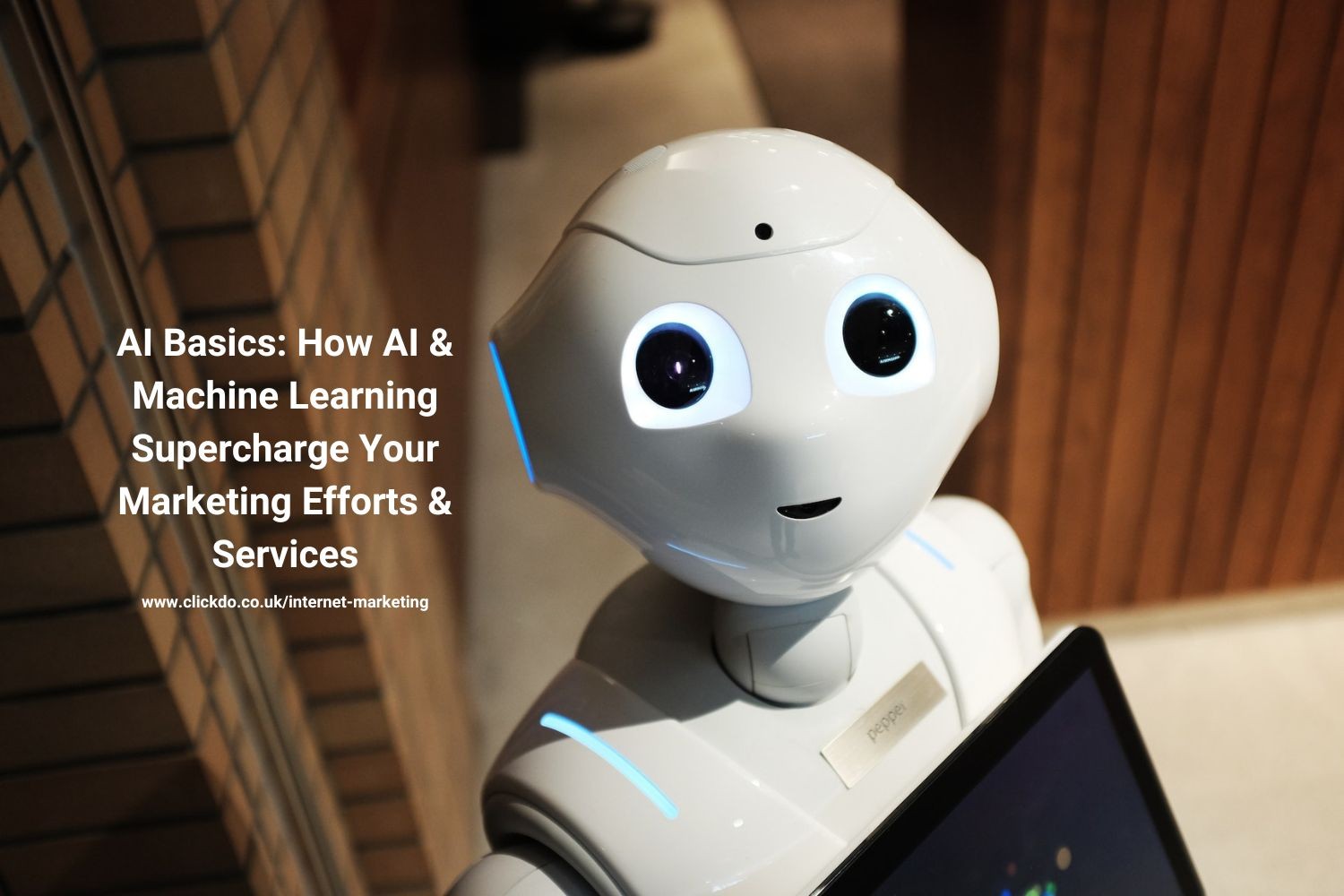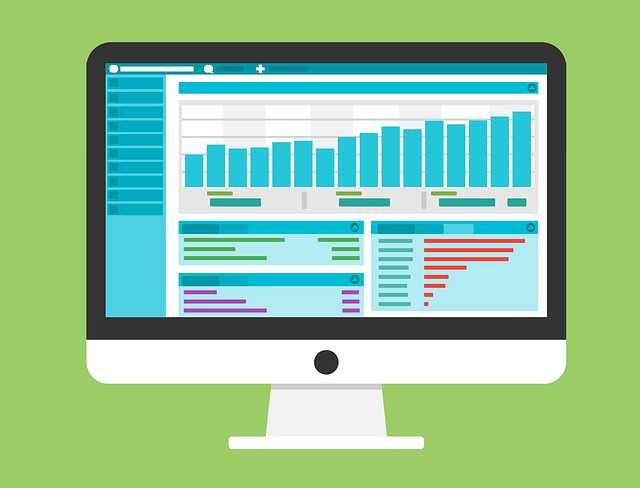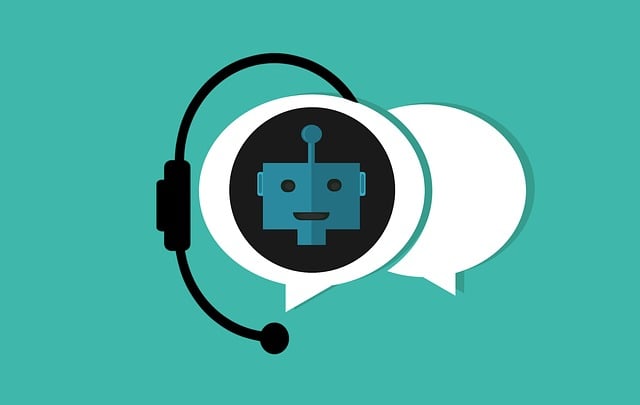
AI Basics: How AI & Machine Learning Supercharge Your Marketing Efforts & Services
The core purpose of marketing is communication. Understanding your customers, coming up with solutions to satisfy the demand, and conducting effective outreach.
Now, a large portion of these tasks tends to be rather repetitive, even mechanical. This often drains marketers of valuable time, meaning they have fewer opportunities to focus on tasks that need a wholly human approach.
This is where AI comes into play. Artificial intelligence, with all its key components, can improve the day-to-day grind of marketing and sales teams by way of automation, authentic insights, and decision-making in vital stages of campaign building.
This article will cover the basics of artificial intelligence and its components, how social media analysis fits in within the digital marketing scene, and various ways marketers can convert these insights into practical solutions.
AI in Marketing

The main driving force behind the widespread adoption of AI solutions in marketing is the ability to garner real-time insights. Accurate analysis of user data is instrumental for building personalized campaigns and making decisions informed directly by your consumer needs and sentiments.
To itemize, AI components focused on improving digital marketing campaigns include:
- Data analysis and quality control.
- Social media measurement.
- Competitor evaluation.
- Media buying.
- Process automation.
- Content creation.
- Optimization and personalization.
Think of big data analytics as your foundation. There can be a lot of white noise when it comes to gathering data and converting it into practical strategies. Social media is overflowing with useless data, and it takes a well-designed system of AI solutions to analyze vast amounts of it and extract useful insights.
The right tools can help you filter out all the noise and ascertain the true impact of your campaigns, as well as understand what people feel about the brand as a whole or specific product.
Although the majority of AI tools are built to handle very narrow tasks, they typically form larger interconnected systems capable of expanding the scope of your campaigns, from how you approach communication with your clients to product launch and crisis response.
What Is AI?
Artificial intelligence (AI) is designed to perform specific tasks without human interference. Although applied AI is utilized in almost every field and is ever-present in the modern world, it has significant limitations.
Its purpose is to perform specialized tasks and to do them well, whether it’s keyword analysis, image recognition, translation, or decision-making for a certain field.
What Is Machine Learning?

as they’re used for collecting data, analyzing it, solving problems, and making decisions based on the acquired information.
Before machine learning was a thing, every input had to be programmed manually to get a specific result. Now, machines are capable of learning on their own and using the information to make predictions and obtain desired outputs.
That said, systems of this type are not large in scope, meaning they have to be designed for a specific purpose in order to solve problems effectively.
For example, it can be used in a telecom solution for automation and making data-driven decisions.
What Is Deep Learning?

Deep learning is technically a type of machine learning. A system of this type comprises neural networks resembling the fundamental structure of a brain with its interconnected neurons, making pattern recognition possible.
The “deep” part in the name refers to the complexity of the neural layers that could make up these systems. It takes time and vast amounts of data to train deep networks for them to be effective, so naturally, it requires a lot of storage and processing power.
However, investing in complex networks of this type can vastly improve your performance thanks to exact pattern identification, classification, and subsequent decision-making based on legitimate insights. Businesses looking to implement advanced AI solutions for their marketing strategies can benefit from partnering with an ai development company to create custom tools tailored to their specific needs.
Using AI to Power Marketing Strategies

Your approach to leveraging AI should be informed by the needs of a specific campaign, your company, and the context of the industry at large.
Data and AI-powered solutions are only useful if you know how to effectively apply them, namely:
- Analyzing available datasets.
- Understanding customer needs and behaviors.
- Generating, optimizing, and personalizing content.
- Keeping track of trends and patterns.
- Streamlining marketing through automation.
- Evaluating image and video consumer content.
- Implementing autonomous agents like chatbots.
Data Analysis

The data can only make a substantial and positive difference if its quality is sound. It can be problematic to sort out the bad-quality data from all the white noise out there.
Machine learning algorithms are vital for filtering out irrelevant, low-quality data while generating only useful mentions. Datasets full of ads and spam can only harm the entire campaign, making it impossible to paint an accurate picture of your consumer base.
So, how can you ensure your analytics are effective? The data is considered “good” when it is timeless, relevant, accurate, representative, consistent, transparent, and complete.
Good-quality insights are what makes AI-based marketing so powerful, so take your data analytics seriously—remove bad data and retain only relevant information that genuinely comes from your customers.
Data management teams need to be capable of taking on the load. Processing data is time-consuming and requires serious labor efforts. Specialists working with data need to know what they’re doing to make sense of the information and collaborate directly with the marketing department.
No marketing campaign can really begin before the data science specialists process the data, which includes cleansing, maintenance, and other forms of monitoring.
If you don’t have a dedicated in-house team, make an effort to work with experienced outside professionals to prepare and launch any campaign, as well as implement AI tools for regular maintenance.
Understanding Consumers

When it comes to social canvassing, sentiment analysis utilizes known NLP (neurolinguistic programming) methods as well algorithms with advanced capabilities to create models that can process social media data, i.e., what consumers feel about your company, competitors, products, and specific campaigns.
As AI tools superseded purely human-led efforts at customer insights, the level of algorithms aimed at analyzing consumer emotion and sentiment has grown more complex, focusing on every key aspect that defines a customer’s opinion, from tone to syntax.
This goes beyond simply keeping track of keywords but concerns semantic analysis as a whole. This approach is particularly important for identifying genuine sentiments and just specific mentions that could be spammy or adjacent in relevancy.
Data scientists can utilize Named Entity Recognition (NER) and Parts of Speech (POS) recognition algorithms to identify specific products, people, and influencers (NER) as well as specific word classes forming organic phrases that reflect sentiments, whether positive or negative (POS).
Models generated by Google BERT and other algorithms are essential for providing reliable insights into your consumer base in real time, especially if you need to track online responses to a specific PR effort as it rolls out.
All these insights form the foundation for decision-making for further content creation, PR campaigns, CX management, and the direction of the brand as a whole.
Content Management
 The creation, optimization, and personalization of promotional content can also be automated through algorithms. These tools augment existing copywriting efforts, particularly when it comes to generating timely and relevant social media posts, pop-ups, emails, and other outreach components capable of boosting ROI.
The creation, optimization, and personalization of promotional content can also be automated through algorithms. These tools augment existing copywriting efforts, particularly when it comes to generating timely and relevant social media posts, pop-ups, emails, and other outreach components capable of boosting ROI.
By automating these stages of content generation and deployment, you can reduce the overall workload and redirect the efforts where it’s due. Instead of having your team waste all this time overseeing tasks that could be handled by AI, you can direct their attention to issues that require human expertise.
Machine learning is especially useful for designing an individual approach to marketing, meaning that your team will be more informed when planning outreach.
Each customer is an individual with their own preferences, so the team needs to be able to customize how they approach each client—whether it’s by using image and video-based content, email, text, or socials.
More importantly, AI can pinpoint which phrases and words to use to draw genuine interest. These insights can be gleaned individually based on a customer’s preferences, online shopping, and activity on social media.
Visual Content

The landscape of social listening has skewed toward visually oriented content. It won’t be enough to simply identify keywords like product names, brands, or services—most consumer content now relies heavily on images, videos, emojis, gifs, etc.
A huge chunk of relevant data won’t even contain the brand name in text form—embedded images will reflect the logo without the caption, while videos will often omit the name of the brand.
To be able to track valid mentions and insights, it’s essential to employ advanced algorithms to analyze other forms of media that don’t rely on text to convey information. This includes everything from scene recognition technologies to image analysis and logo detection.
In combination, these tools will help you generate a more accurate picture of the brand’s relevancy online. In addition, it analyzes these mentions in context, so each mention will give you an idea about the type of sentiments and associations your product/brand elicits from consumers.
Using Chatbots

An important part of the general automation process is optimizing customer service with the help of reliable autonomous agents. For most online businesses and stores, it means using chatbots.
While it’s true that some customers prefer to talk to a human to resolve specific issues, daily outreach and customer support can be handled more effectively through chatbots.
This way, you won’t need to overload your team members with tasks that can be resolved with chatbots that utilize machine learning techniques to produce accurate responses for very specific requests.
Chatbots will be able to improve their performance with time as they learn more about the environment and customers, resulting in a more natural and thorough customer support experience.
In many cases, chatbots can upgrade from simple query resolution to upselling and implementing other marketing strategies independently by making accurate value judgments without human input.
Trend Identification

Detection of new patterns and trends aids the overall growth of your brand, especially if it’s beginning to implement more and more AI consumer tools.
Analyzing the changes in datasets, as well as emerging themes and specific patterns of engagement—all this is crucial for adapting your campaigns for the evolving market and social sentiment.
Unsupervised machine learning is the best tool for spotting trends, as these techniques eliminate human bias, identify elusive topics and patterns, and generally reduce the time it takes to detect new themes.
These algorithms pick out compelling patterns that don’t match pre-existing values in order to identify surges in engagement, viral trends, and valid semantic structures and sort the new values into congruent groups.
This way, you can trace how specific topics and structures interconnect, powering the overall effort to track market shifts and deploy new insights accordingly.
Choosing AI Marketing Tools
Oversaturation of AI vendors and products means it can be easy to get lost in it, and at the end of the day, you end up using things you never needed. The main purpose of these tools is to improve the speed, quality, and impact of your strategies.
Visitor Conversion

High numbers of visitors do not directly lead to a boost in sales. For this, you need to tailor the visitor experience to convert them into customers.
Website design and personalization is perhaps the most crucial early stage when optimizing your online marketing strategy. On-site tools for such conversion are essential if you want to do the following:
- Drive leads;
- Raise ROI;
- Adjust your strategies in real-time.
AI tools of this type are designed to analyze intent and respond with appropriate reactions. Each visitor is a potential customer, and they are more likely to respond to proposals that are both timely and tailored to their intent.
B2B and Customer Outreach

Doing manual email follow-ups is only viable in the early days of your business development. With growth come numbers, and that, in turn, means sending hundreds upon hundreds of replies on a daily basis.
Email sequences powered by AI software are the only effective way to reduce the strain on your labor force and improve the overall outreach speed.
These tools are built for tracking prospects and personalizing replies for each customer. They also analyze response times and send follow-ups when required, i.e., when you received no responses in a given timeframe.
Prospecting automation is another time-saving technique for increasing the success of follow-ups and drawing in viable leads. By adding calendar links to email sequences, marketers and sales reps can negotiate much faster.
All promising prospects will be scheduled for meetings automatically if the email and chat follow-ups deemed them qualified for the business.
Prospecting is time-critical when it comes to living conversion, meaning that potential buyers visiting your website in real-time are more likely to close a deal when approached through live chat.
Not every lead is useful, though, and AI-powered prospecting basically empowers reps to know exactly which prospects to target.
After low-quality contacts and dead-end leads are filtered by the software based on specific parameters, you can go ahead and engage valid leads with sales enablement tools.
Sales Enablement

To successfully carry out emerging opportunities, marketers and other reps rely on sales enablement software to create a single hub to navigate data, collaborate internally, and combine all existing components into actionable steps.
These tools are designed to streamline resource management, allowing you to manipulate any materials you already have and generate new ones to drive your sales. The key benefits of sales enablement tools include:
- Making the sales pipeline accessible for broad analysis and editing. This makes collaboration between teams faster and more informed.
- Monitoring prospect activity and interactions, which includes the prospect’s history and the context in which they progressed from visitor to buyer. Knowing what tools and strategies were effective with each buyer can provide your team with important information for crafting new campaigns.
- Personalizing interactions with clients, including follow-ups, meetings, conversations, etc. This means your datasets and other content are used collectively to help you discern which information and offer are likely to draw in a specific customer and lead to a deal.
- Sharing content between teams to generate practical insights for improving customer support and sales efforts. These tools drive engagement and help you fine-tune customer experience and keep the sales cycle turning.
Tools like HubSpot or Outreach can really change the everyday approach to sales and marketing for the better. Your teams will be able to exchange information and access all data and stats in one place. When you make the collaboration process as seamless as possible, your sales efforts will prove to be speedier and more effective.
Final Thoughts
As you can see, a holistic approach to available AI solutions is the best way to boost your social media marketing efforts. Well-calibrated AI tools are capable of providing accurate insights when it comes to your audience, brand perception, and more.
That said, every tool is only effective when expertly wielded. Rather than pulling on random individual elements, you should focus on building a network capable of augmenting and supporting your digital marketing strategies in real time.
Don’t go with the newest trendiest thing on the market—do your research into available technologies, collaborate with experienced data science talent, and choose your solutions based on how they can benefit your venture in particular.

